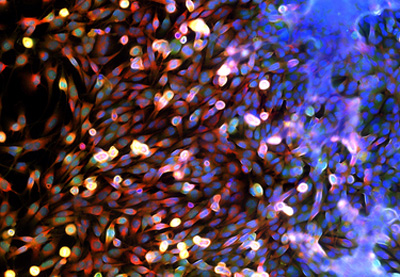New insights into the functions of inflammasomes
Posted: 3 January 2024 | Drug Target Review | No comments yet
For diseases mediated by NLRP3, AIM2, NLRC4, and Pyrin, understanding inflammasome biology could identify therapeutic targets.

The molecular mechanisms responsible for the activation of multiple inflammasomes and their role in inducing inflammatory cell death have been discovered by a team of scientists from Ulsan National Institute of Science and Technology (UNIST). These findings explain the connection between innate immune sensors and offers useful insights into the functions of inflammasomes in innate immunity and inflammasome biology.
The findings also have promise for identifying new therapeutic targets for diseases mediated by NLRP3, AIM2, NLRC4, and Pyrin.
Inflammasomes are crucial for innate immune defence, sensing pathogens and triggering cell death in infected cells. Therefore, they have essential roles in inflammation, development, and cancer. Inflammasome sensors detect specific pathogen- and damage-associated molecular patterns (PAMPs and DAMPs) and make a complex with the adapters ASC and caspase-1. However, the integration of multiple inflammasome sensors for optimal host defence has remained intangible.
Led by Dr SangJoon Lee from the Department of Biological Sciences at UNIST, the team studied the simultaneous activation of multiple inflammasomes by various ligands. They discovered that this activation initiated distinct types of programmed inflammatory cell death, which could not be replicated by treating with a single pure ligand of any individual inflammasome.
The team identified NLRP3, AIM2, NLRC4, and Pyrin as members of a large multiprotein complex, along with ASC, caspase-1, caspase-8, and RIPK3. They found this complex drives a process called PANoptosis, involving multiple types of inflammatory cell death.
The multiprotein complex was released into the extracellular space, forming multiple extracellular inflammasome particles. When these particles were engulfed by neighbouring macrophages, they induced inflammation. This highlights a previously unknown regulatory connection and molecular interaction between inflammasome sensors, leading to the assembly of a multiprotein complex that includes multiple inflammasome sensors and cell death regulators.
By understanding the interactions among NLRP3, AIM2, NLRC4, and Pyrin, it enables scientists to comprehend the functions of these molecules in innate immunity and inflammasome biology. It also promises the identification of potential therapeutic targets for diseases mediated by these inflammasomes.
Dr Lee said, “The identification of key molecular interactions and the assembly of the multiprotein complex shed light on the intricate mechanisms of immune defence against multiple pathogens. This knowledge can potentially guide the development of novel therapeutic strategies for diseases associated with NLRP3, AIM2, NLRC4, and Pyrin.”
To validate their findings, the scientists conducted animal and mouse experiments. When the released inflammatory particles were injected into mice, it resulted in weight loss, indicating the particles’ harmful effects. Mice with inhibited or removed genes associated with cell death did not experience weight loss, which further confirmed the role of inflammasome-mediated cell death in disease progression.
This study was published in Cellular and Molecular Immunology.
Related topics
Immunology, Therapeutics
Related conditions
Cancer, inflammation
Related organisations
Ulsan National Institute of Science and Technology (UNIST)
Related people
Dr SangJoon Lee (UNIST)







